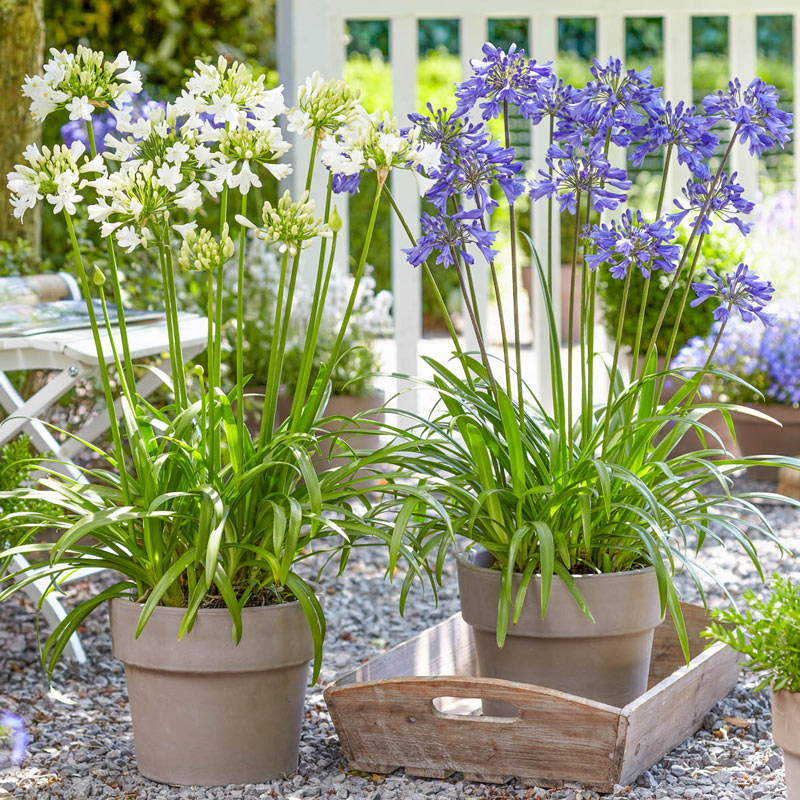Agapanthus Varieties: Picking the most effective for Your Landscape
Agapanthus Varieties: Picking the most effective for Your Landscape
Blog Article
Grasping the Art of Agapanthus Treatment: Essential Steps for Healthy Growth and Dynamic Blooms
In the realm of horticulture, the growing of agapanthus stands as a fulfilling undertaking for those who seek to nurture these classy flowering plants. From choosing the ideal range to grasping trimming methods, the journey in the direction of cultivating growing agapanthus plants is diverse and holds the key to unlocking the full possibility of these botanical gems.

Picking the Right Agapanthus Selection

When selecting the right Agapanthus selection for your garden, take into consideration variables such as environment viability, blossom shade, and development practice. In addition, take into consideration the climate in your region to ensure the Agapanthus variety you choose can prosper in your details conditions. Understanding the growth habit of different Agapanthus ranges is important for proper placement within your yard.
Ideal Planting Problems
Thinking about the ideal environmental needs is crucial for effective Agapanthus growing. Agapanthus plants are sensitive to cold temperature levels and should be shielded from frost during wintertime months.
To guarantee healthy and balanced growth and vibrant blooms, plant Agapanthus light bulbs at a deepness of concerning 2-4 inches and space them 8-12 inches apart. Adding organic issue, such as garden compost, to the soil can boost water drainage and fertility, promoting robust root advancement. Mulching around the base of the plants aids keep moisture and reduces weed development. Regular watering is vital, specifically during the growing season, to keep the soil consistently moist yet not soaked.
Watering and Feeding Tips
Preserving proper dampness levels and providing crucial nutrients are vital elements in the care regimen for Agapanthus plants. When it comes to sprinkling Agapanthus, it is essential to strike an equilibrium. These plants prefer consistently damp soil however are susceptible to root rot if overwatered.
Fertilizing Agapanthus is vital for advertising healthy development and prolific flowers. Use a balanced fertilizer, such as a 10-10-10 formula, in the very early spring as new development arises. By complying with these watering and fertilizing ideas, you can guarantee your Agapanthus plants flourish and create lively, durable blooms.
Pruning Methods for Agapanthus
Trimming Agapanthus plants at the suitable times and with correct techniques is critical for maintaining their health and wellness and promoting ideal development and flowering. The excellent time to trim Agapanthus is in late winter or early spring before new growth emerges.
Deadheading spent blossoms can additionally reroute the plant's power right into generating even more blooms instead than establishing seeds. If you want to accumulate seeds for propagation, leave some flowers to fully grown and completely dry on the plant.
Bear in mind to utilize clean, sharp devices to make specific cuts and minimize the danger of introducing diseases. Agapanthus. Normal pruning will certainly help maintain your Agapanthus looking healthy and cool while making sure an abundant display of beautiful flowers
Handling Common Parasites and Illness
After ensuring appropriate trimming methods for Agapanthus, it is vital to address usual insects and conditions that can affect the health and vigor of these plants. Agapanthus plants are typically durable yet can still succumb to particular problems. One usual parasite that influences Agapanthus is the Agapanthus gall midge. This little, orange fly lays its eggs in the vegetation, Visit Your URL causing altered development and flower buds that fall short to open. To battle this insect, trim and ruin any kind of affected plant components and consider using insecticidal soap.
Another common issue is fungal fallen leave area, which offers as dark lesions on the leaves. To avoid fungal diseases, guarantee excellent air flow around the plants, stay clear of overhanging watering, and remove any type of contaminated fallen leaves promptly. Furthermore, Agapanthus plants can deal with root rot if they are grown in badly draining pipes dirt. To avoid this, plant Agapanthus in well-draining dirt and avoid overwatering. By being alert find out this here and taking prompt action against illness and parasites, you can help your Agapanthus plants flourish and create lively flowers.

Conclusion
To conclude, grasping the art of agapanthus treatment includes picking the ideal range, providing excellent planting problems, appropriate watering and fertilizing, appropriate trimming methods, and attending to typical pests and diseases. By adhering to these crucial actions, you can guarantee healthy development and lively blooms for your agapanthus plants. Bear in mind to routinely monitor and keep your plants to promote their overall wellness and longevity.
To make sure healthy development and dynamic blossoms, plant Agapanthus light bulbs at a deepness of regarding 2-4 inches and space them 8-12 inches apart. By adhering to these watering and fertilizing suggestions, you can ensure your Agapanthus plants grow and create vibrant, resilient blooms.
One visit site typical insect that influences Agapanthus is the Agapanthus gall midget. Additionally, Agapanthus plants can endure from root rot if they are planted in improperly draining dirt. By following these necessary actions, you can make certain healthy development and vibrant flowers for your agapanthus plants.
Report this page